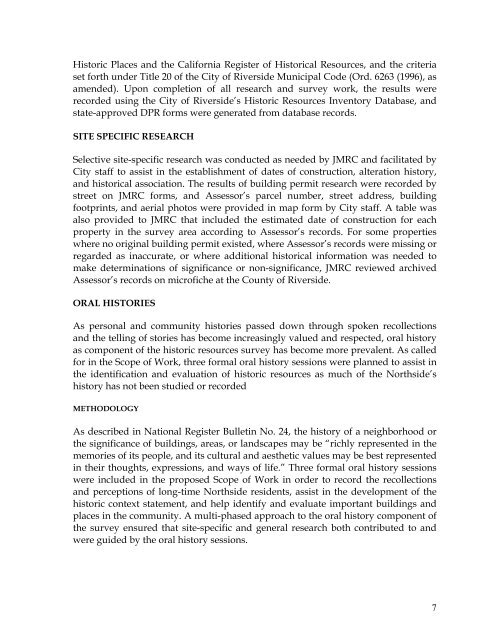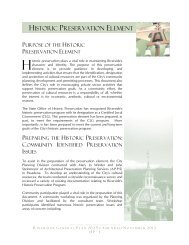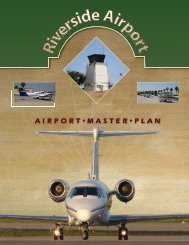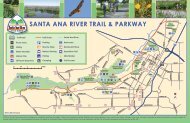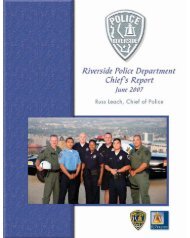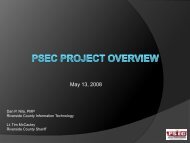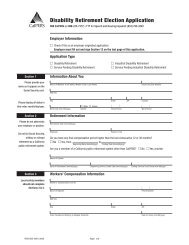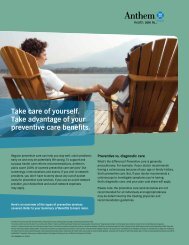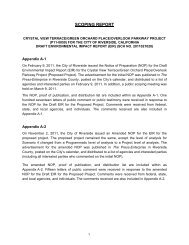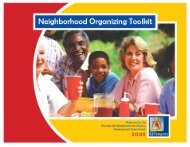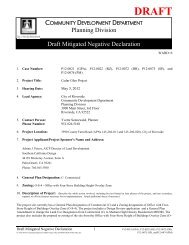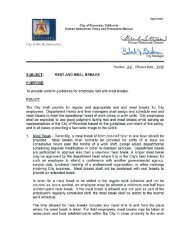Northside - City of Riverside
Northside - City of Riverside
Northside - City of Riverside
Create successful ePaper yourself
Turn your PDF publications into a flip-book with our unique Google optimized e-Paper software.
Historic Places and the California Register <strong>of</strong> Historical Resources, and the criteria<br />
set forth under Title 20 <strong>of</strong> the <strong>City</strong> <strong>of</strong> <strong>Riverside</strong> Municipal Code (Ord. 6263 (1996), as<br />
amended). Upon completion <strong>of</strong> all research and survey work, the results were<br />
recorded using the <strong>City</strong> <strong>of</strong> <strong>Riverside</strong>’s Historic Resources Inventory Database, and<br />
state-approved DPR forms were generated from database records.<br />
SITE SPECIFIC RESEARCH<br />
Selective site-specific research was conducted as needed by JMRC and facilitated by<br />
<strong>City</strong> staff to assist in the establishment <strong>of</strong> dates <strong>of</strong> construction, alteration history,<br />
and historical association. The results <strong>of</strong> building permit research were recorded by<br />
street on JMRC forms, and Assessor’s parcel number, street address, building<br />
footprints, and aerial photos were provided in map form by <strong>City</strong> staff. A table was<br />
also provided to JMRC that included the estimated date <strong>of</strong> construction for each<br />
property in the survey area according to Assessor’s records. For some properties<br />
where no original building permit existed, where Assessor’s records were missing or<br />
regarded as inaccurate, or where additional historical information was needed to<br />
make determinations <strong>of</strong> significance or non-significance, JMRC reviewed archived<br />
Assessor’s records on micr<strong>of</strong>iche at the County <strong>of</strong> <strong>Riverside</strong>.<br />
ORAL HISTORIES<br />
As personal and community histories passed down through spoken recollections<br />
and the telling <strong>of</strong> stories has become increasingly valued and respected, oral history<br />
as component <strong>of</strong> the historic resources survey has become more prevalent. As called<br />
for in the Scope <strong>of</strong> Work, three formal oral history sessions were planned to assist in<br />
the identification and evaluation <strong>of</strong> historic resources as much <strong>of</strong> the <strong>Northside</strong>’s<br />
history has not been studied or recorded<br />
METHODOLOGY<br />
As described in National Register Bulletin No. 24, the history <strong>of</strong> a neighborhood or<br />
the significance <strong>of</strong> buildings, areas, or landscapes may be “richly represented in the<br />
memories <strong>of</strong> its people, and its cultural and aesthetic values may be best represented<br />
in their thoughts, expressions, and ways <strong>of</strong> life.” Three formal oral history sessions<br />
were included in the proposed Scope <strong>of</strong> Work in order to record the recollections<br />
and perceptions <strong>of</strong> long-time <strong>Northside</strong> residents, assist in the development <strong>of</strong> the<br />
historic context statement, and help identify and evaluate important buildings and<br />
places in the community. A multi-phased approach to the oral history component <strong>of</strong><br />
the survey ensured that site-specific and general research both contributed to and<br />
were guided by the oral history sessions.<br />
7


